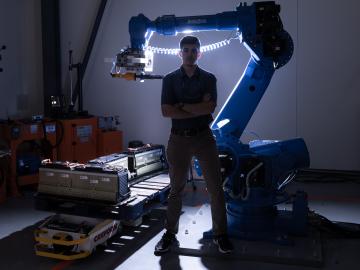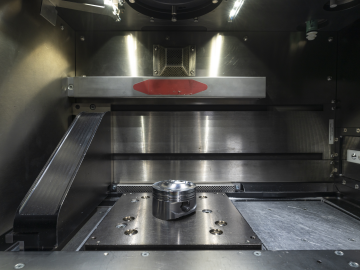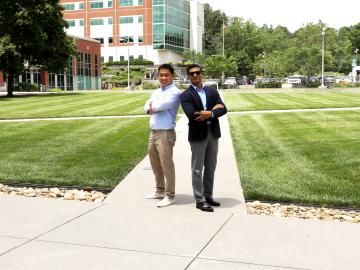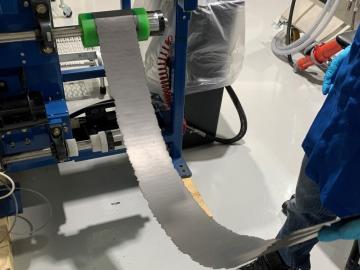
Filter News
Area of Research
News Topics
- (-) Artificial Intelligence (18)
- (-) Bioenergy (13)
- (-) Energy Storage (10)
- (-) Exascale Computing (12)
- (-) Grid (11)
- (-) Materials Science (8)
- (-) Mercury (2)
- (-) Space Exploration (5)
- (-) Summit (11)
- (-) Transportation (7)
- 3-D Printing/Advanced Manufacturing (11)
- Advanced Reactors (1)
- Big Data (8)
- Biology (16)
- Biomedical (5)
- Biotechnology (2)
- Buildings (6)
- Chemical Sciences (10)
- Clean Water (7)
- Composites (2)
- Computer Science (22)
- Coronavirus (1)
- Critical Materials (1)
- Cybersecurity (6)
- Emergency (1)
- Environment (36)
- Fossil Energy (2)
- Frontier (13)
- Fusion (7)
- High-Performance Computing (18)
- Hydropower (2)
- Isotopes (7)
- Machine Learning (11)
- Materials (21)
- Mathematics (2)
- Microelectronics (2)
- Microscopy (3)
- Nanotechnology (5)
- National Security (15)
- Neutron Science (26)
- Nuclear Energy (19)
- Partnerships (6)
- Physics (11)
- Polymers (2)
- Quantum Computing (6)
- Quantum Science (5)
- Security (1)
- Simulation (19)
- Software (1)
Media Contacts

Madhavi Martin brings a physicist’s tools and perspective to biological and environmental research at the Department of Energy’s Oak Ridge National Laboratory, supporting advances in bioenergy, soil carbon storage and environmental monitoring, and even helping solve a murder mystery.

Researchers at the Department of Energy’s Oak Ridge National Laboratory are leading the way in understanding the effects of electrical faults in the modern U.S. power grid.

After being stabilized in an ambulance as he struggled to breathe, Jonathan Harter hit a low point. It was 2020, he was very sick with COVID-19, and his job as a lab technician at ORNL was ending along with his research funding.

Mirko Musa spent his childhood zigzagging his bike along the Po River. The Po, Italy’s longest river, cuts through a lush valley of grain and vegetable fields, which look like a green and gold ocean spreading out from the river’s banks.

ORNL hosted its fourth Artificial Intelligence for Robust Engineering and Science, or AIRES, workshop from April 18-20. Over 100 attendees from government, academia and industry convened to identify research challenges and investment areas, carving the future of the discipline.

Dean Pierce of ORNL and a research team led by ORNL’s Alex Plotkowski were honored by DOE’s Vehicle Technologies Office for development of novel high-performance alloys that can withstand extreme environments.

Wildfires have shaped the environment for millennia, but they are increasing in frequency, range and intensity in response to a hotter climate. The phenomenon is being incorporated into high-resolution simulations of the Earth’s climate by scientists at the Department of Energy’s Oak Ridge National Laboratory, with a mission to better understand and predict environmental change.

When geoinformatics engineering researchers at the Department of Energy’s Oak Ridge National Laboratory wanted to better understand changes in land areas and points of interest around the world, they turned to the locals — their data, at least.

Early experiments at the Department of Energy’s Oak Ridge National Laboratory have revealed significant benefits to a dry battery manufacturing process. This eliminates the use of solvents and is more affordable, while showing promise for delivering a battery that is durable, less weighed down by inactive elements, and able to maintain a high capacity after use.

Over the past decade, teams of engineers, chemists and biologists have analyzed the physical and chemical properties of cicada wings, hoping to unlock the secret of their ability to kill microbes on contact. If this function of nature can be replicated by science, it may lead to products with inherently antibacterial surfaces that are more effective than current chemical treatments.


